Centuries ago, John Jacob Astor started snatching up land across Manhattan. The island was mostly rural and untapped, but he perceived a simple way to stay rich. Own the land. Whatever was built-up on it—and whomever occupied it—would have to pay whatever rent he demanded. If monumental structures were built on his lands, they would be forced to amass money to pay his ever-higher rents. Otherwise, he could foreclose, seize, and then resell or manage them. A handful of early-American families did that. Astor began in 1799, mere years after the birth of the United States of America.
I could be wrong, but it seems that the lands amassed by the Astors occupy Manhattan's most important areas.
Born in Waldorf, Germany, John Jacob Astor made himself America’s first multi-millionaire and its richest man through brutal fur-trading against the Native Americans. He bought and kept Manhattan’s land—heartlessly squeezing money from tenants and those who built on his land.
Insuring Astor's moneymaking enterprise in fur trading, the American government suddenly barred foreign fur traders. Maybe he enticed them: a precursor to today's graft and lobbyists. He seized the moment to create a monopoly and absorb his competition. He also profited hugely from illegally smuggling opium into China to get its population addicted.
Just like his father, William Backhouse Astor greedily focused on leases, deeds, and mortgages. He was never known to smile. Being “merely” the landowner, he did not care about the suffering of occupants in 720 slum-like tenements on his land. He did his best to defy all attempts at tenement reform, and he spent years delaying subway construction—otherwise immigrants might live elsewhere in the city. From 1860 onwards, he fought the creation of a national income tax. He also fought New York City’s initiative to create green-spaces for a healthier-yet-crammed population. When he lost against that legislature—who feared a health pandemic—he raised rents to recover any loss of income. He epitomized Ebenezer Scrooge.
That hoarding—and avoidance of charity or investment in neighborhoods—continued for four generations. Such a terrible dynasty occurred when the average American worker earned $0.37 per hour and worked 48 hours per week.
John Jacob took Aaron Burr’s land—which is now Greenwich Village—in exchange for “quick money” that Burr needed to flee America after shooting Alexander Hamilton in a duel. That area is quite valuable now, commanding high costs to live there.
Every time there was a financial panic, he bought land at rock-bottom prices. The Astor family strategically bought empty lots of land that now hold the Waldorf Astoria Hotel...
...and the Empire State Building: the tallest in the world, in its era.
Astor supposedly gobbled up the Eden Farm: 22-acres that eventually became Times Square.
Times Square is a cesspool of grime, sharky businesses, and filth... yet it's masked by dazzling lights, and it's the dumping ground for global advertisers luring tourists. It gets jammed during New Year's Eve, which is intolerable. Yet, it pours profits into the coffers.
Astor finagled to acquire the 51,000-acre Putnam County estate of Robert Morris, and then he evicted hundreds of its tenants. NY State sought to undue his calculated greed.
The Astor family bought some land around Central Park, which now has America’s highest prices to occupy.
As real estate moguls, they owned a chunk of the East Village and Alphabet City, encircling 4th Street, 5th Street, 6th Street, 7th Street, Avenue A, and Avenue B.
Sadly, those areas were infamous for hundreds of abysmal tenement houses... and it stayed rundown until the 1980s!
The Astors coerced Trinity Church to sell some of its land: now the heart of America’s financial center.
*In 1705, Trinity Church was granted ownership of an entire area in SoHo from Queen Anne of England. It still owns 14 acres, including this building on Hudson Street and collects a lot of rent revenue.
West of Fifth Avenue, they owned all of the midtown territory in the 30s, which now includes the Garment District. It was formerly the Glass House Farm, named for a bottle manufacturer of 1754. Evidence of Astor's uncaring greed explains why that area still looks so grievingly rundown, as compared to the neighboring Murray Hill area. Making it worse, it still has sweatshops, which the area was ridden with in the 1800s unit social outrage diminished them.
That area has the 39th Street ferry terminal, as well as several onramps to the Lincoln Tunnel.
It contains Hudson Yards, which was undeveloped until recently.
If you need to satisfy a hungry landlord, you might need to build up to meet their demands. So, the train parking area was covered with skyscrapers (just like at Grand Central Terminal).
The area houses the Javits Convention Center...
...and Pennsylvania Station: the hub for Long Island Railroad, NJ Transit, and MTA subway. Initially, Penn Station was built as a beautiful haven for passengers, in an era when grand public spaces were important for society.
But imagine that you must satisfy a greedy landlord. So, they demolished its landmark architecture (and probably dumped in into the ocean) and plopped an ugly stadium on it called Madison Square Garden. Its ever-increasing ticket prices generate tons of dollars, yet it's a blemish to the city.
Squished underneath, the station lacks space... just like postwar apartments had lowered ceiling heights to squeeze more tenants in buildings. For decades, it has been forlorn, dirty, poorly-lit, and neglected... despite generating huge revenue.
Behind it is the main Post Office. In the other direction is Herald Square, home to the world's largest department store. Most people in retail avoid working there. But it draws huge quantities of tourists—especially during the holiday season and from the Macy's Day Parade. Despite that, Herald Square is a grimy, dejected area that New Yorkers avoid.
Nearby is the Port Authority Bus Terminal. The Port Authority of NY is an infamously corrupt organization that guzzles revenue like the Manchus of China yet offers crumbling infrastructure. Its huge ugly bus terminal is seedy beyond description.
The Astor family supposedly owned 700 properties of land, and they were located on:
-Bloomingdale Road (which was the former Dutch name for the uptown part of Broadway. Broadway derived from the Dutch words Breede Weg = Broad Path).
-Third Avenue, Madison Avenue, Fifth Avenue, Sixth Avenue, Seventh Avenue, Eighth Avenue, Ninth Avenue, Tenth Avenue, Eleventh Avenue, and West End Avenue.
-Barclay Street, Dey Street, Greenwich Street, and Vesey Street (where the huge post office is). It's near the World Trade Center compound: the tallest buildings in the world in their era. (The Twin Towers mostly held the Port Authority). Nearby is Cortlandt Way, named for the powerful 1600s Dutch family: Van Cortlandt. NYC's famous Caroline Webster Schermerhorn married William Backhouse Astor, Jr. Her ancestry came from the Dutch-American clan that founded New Netherland… now called New York State. Her mother came from the Van Cortlandt landholders.
World Trade also got skeletal subway station, whose corruption ballooned the cost. Money was surely pocketed.
The Brookfield Place shopping mall is also on Vesey Street, as is the ferry terminal to New Jersey.
-Bowery Street, a tragic area that President Theodore Roosevelt compared to hell.
For such degeneration to persist for decades, the landlord/property-owner must be decrepit. Astor was known to fight any city-mandated improvements to his areas.
It's related to the notorious Five Points area, which was headquarters for New York City's murderous gangsters.
Bowery Street also contains onramps for the Manhattan Bridge, which overshoots land that is closer to the riverside.
-Broome Street, which crosses Little Italy and Chinatown (both are equivalent to garbage dumps).
-Rivington Street (between both of those streets are the onramps for Williamsburg Bridge, which oddly overshoot other areas where the bridge touches land).
-Charlton Street, full of new skyrocketing developments at sky-high prices.
-Cherry Street and Monroe Street, which contain low-income Public Housing Projects...
including Knickerbocker Village. (unique to NYC, the Projects are often neglected epicenters for reinforced poverty).
Like Astor's other initial territories, the area around Cherry Street was historically a slum. It provided salary-consuming rents paid by forsaken immigrants, and its high turnover of tenants kept money coming in.
-Cruger’s Warf near Old Slip (from the colonial Dutch era).
The area morphed, as ways of making the most money did.
The north part is now called Hanover Square and contains NYC Teachers Retirement System and the river ferries to/from Wall Street. It seems remarkably unchanged, despite the passage of time. Whoever owns that land is showing off that they don't need to build on it; the air rights in that area are astronomical.
-Water Street, which is amidst the touristy South Street Seaport, a ConEd Substation, and Morgan Stanley located at One New York Plaza.
-Chatham Street is now called Park Row. It's in Chinatown and FiDi (Financial District). During the "building boom", the area held City Hall, Potter Building, New York World Building, Pulitzer Building, New York Times Building, the New York Tribune Building, and the tallest office building in the world.
In a craving for more money-making space, those buildings were demolished to make bigger ones. Pace University also arrived.
It also contains the onramps for the Brooklyn Bridge, which overshoots other areas closer to the riverfront.
-Nassau Street, which is lined with the Federal Reserve, Federal Hall Customs House from 1842, and a Trump Building facing Wall Street.
-Grand Street, which was full of slums at turn-of-century. Nowadays, it spans derelict buildings (that are fire-traps), Chinatown, and new development in pricey SoHo.
-Hamersley Street, which is now included in Houston Street (where Nikola Tesla’s lab research was destroyed in a 1895 fire). We can thank Tesla for ridding the city's stupidly-created electric poles.
-Supposedly, land was granted for Hetty Green's family to use. She was a wealthy NYC miser of the 1860s, nicknamed Witch of Wall Street, whose daughter married an Astor in 1909.
-136th Street in Harlem.
-Hudson Street and King Street in SoHo.
A school on King Street couldn't afford to operate anymore and was converted to expensive residences.
Seen below, the upscale Mercer Hotel on Hudson Street is in an 1888 industrial building that was constructed for John Jacob Astor's fur coat manufacturer.
-Lafayette Place, a two block cul-de-sac of NY’s first luxury row-houses called LaGrange Terrace. They were built by Astor using Sing Sing inmates as free labor, and it's where Delanos and Vanderbilts lived. Now it’s forlorn, but nobody dares to touch it.
-Leroy Street, in the West Village.
It's more famous for the new luxury building that demanded the highest price of any home south of 14th Street. The billionaire Michael Rubin paid $43 million for the penthouse.
-Ludlow Street, on the Lower East Side near the Tenement Museum (that shows people how NOT to treat people and how disgusting NYC can be... because slumlords still exist).
-Morrisania Village in the Bronx is now low-income Housing Projects.
-Mount Morris, in the Marcus Garvey neighborhood in Harlem.
-Parts of Murray Hill, perhaps where the onramps for the Queens Midtown Tunnel appear, after swooping south 5 blocks from where the tunnel reaches Manhattan.
-Pearl Street (originally named Queen Street in pre-Revolution times), now home to Deutsche Bank offices in FiDi, but originally another ghetto.
-Prince Street, Spring Street, Vandam Street, and Varick Street in SoHo.
SoHo is now a profitable retail/dining/hotel district, drawing prestigious companies from Fifth Avenue.
Varick Street also holds onramps for the Holland Tunnel.
-State Street is centered amidst the former Customs House of 1830, the Whitehall ferry terminal to Staten Island, and onramps for the Hugh Carey Tunnel.
-12th Street and 21st Street.
-Warren Street in pricey Tribeca, where more towers are proposed, in efforts to increase revenue per-square-foot.
-Washington Street, which runs from 7 World Trade Center northbound through Greenwich Village.
The terminus of the overpopulated High Line Park is at Washington Street in the Meatpacking District.
-The ownership of each building in the early Meatpacking District was supposedly listed as Astor. That hugely-profitable industrial area (notorious in the whistleblowing novel The Jungle by Upton Sinclair) eventually declined. But it sought a regrowth in the 1990s as a dining/nightlife mecca for partygoers and suburbanites.
If you think about the possibilities, Astor land might handle 11 of the 12 passages into Manhattan, beneath 40th Street. That includes all of the city’s main bridges and tunnels; the only other one is the Queensboro Bridge.
The founder of the Astor fortune also bought the John Cozine Farm, which developed into Midtown West.
Just missing Carnegie Hall, it extends from Seventh Avenue—across Broadway—to Eleventh Avenue, and it stretches from West 57th Street (which is the main crosstown commercial thoroughfare) to West 51rd Street. That snugly occupies the world-famous Theatre District... which might explain why theaters are often run-down and neglected (despite the hordes of income they make) and why actors are paid so little in NYC. When a new theatre was created (via renovation), only a mega corporation like Disney could afford to accept the required costs.
The area encompasses Hearst Tower (publisher of Vogue), more low-income Housing Projects, and Hells Kitchen. As the name implies, Hells Kitchen neighborhood was dismal place of poverty and crime—for decades—until recent pricey gentrification.
When Hells Kitchen needed more cash, it sought a demographic that would pour money into it: gay life. It involved the same type of promoters who helped the Meatpacking District.
South of that territory, Astor bought the Hermitage Farm. It went from Seventh Avenue to Eleventh Avenue, and it stretched from West 48th Street to West 40thStreet. Astor grabbed slices of land between them to connect them.
Astor's family erected the world-famous Knickerbocker Hotel (which has a famously-abandoned subway entrance)...
...and the St. Regis Hotel.
The family bought land in Duchess and Westchester Counties. Purportedly, they owned much of Hyde Park, a Hudson Valley community where the Delanos built the home that President Franklin Roosevelt grew up in.
Clearly, some of the Astor properties are more glamorous than others—perhaps depending on which member of the family controlled them.
Tiring of family feuds, a nicer branch of the family relocated to England. When the next scion (of the American branch) was lured aboard the “unsinkable” Titanic—which sunk on its debut—the dynasty's remaining heir was easily manipulated. Like Carnegie and the Vanderbilts, he suddenly gave away money. Sadly, John Jacob Astor IV’s drowning (alongside other commercial titans and robber-barons) in 1912 ended the funding for Nikola Tesla’s Motor Company. John IV also believed in pneumatic power. Prophetically, his 1894 book discussed Earth’s future being run by a corporate technocracy.
Nowadays, it's nearly impossible to understand who owns property. Shell companies and subsidiaries are listed, instead of surnames (which was the case in Astor's era). If this information is accurate, then it might explain why much of New York City is unchanged, greedy, dirty, and corrupt.
*Seen below, such games were created in 1903 and 1935. It's important to note that...





























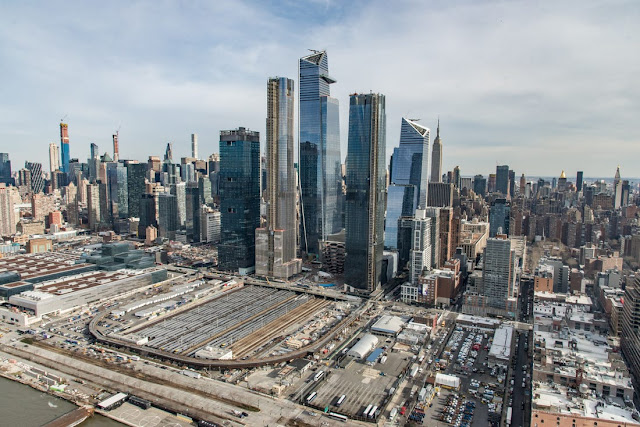
































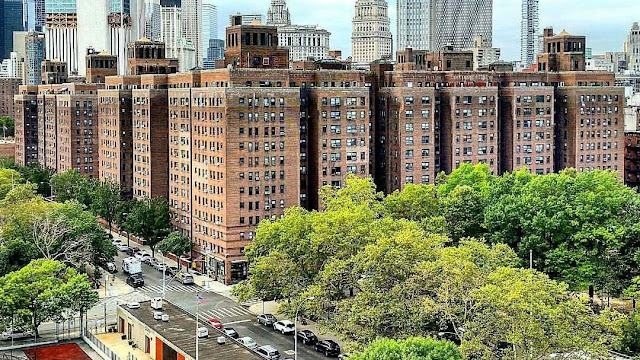









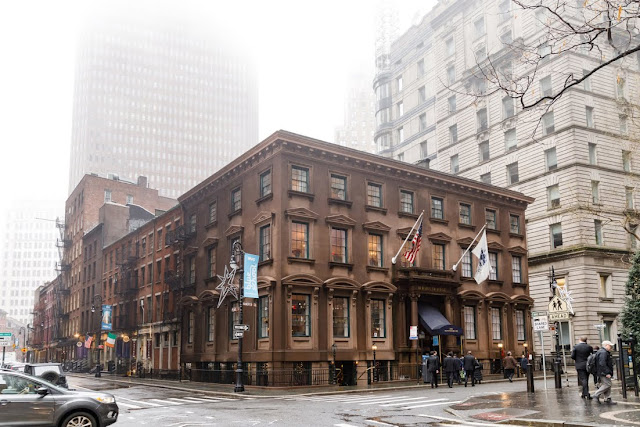







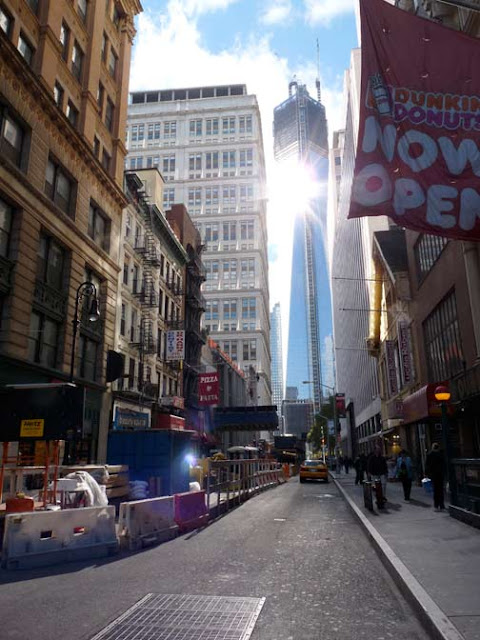
























































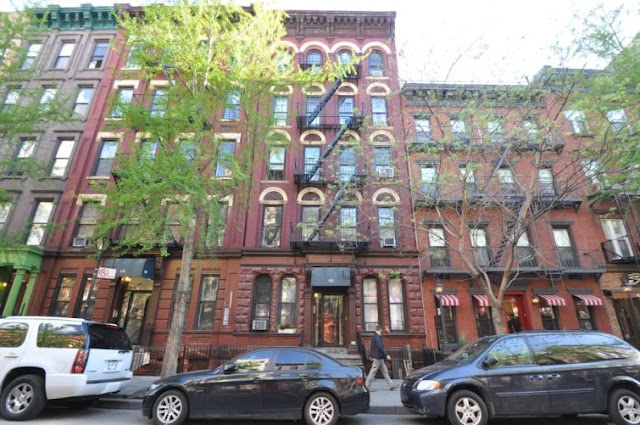












No comments:
Post a Comment
Don't be shy: leave your comments :)